How to Write Taglines That Don’t Suck
Let’s talk about taglines.
These tiny but mighty lines were probably born in a room full of whiskey-steeped mad men in the ’50s. They’ve since helped countless businesses become household names. But are they still valuable?
We’ve come a long way from Madison Avenue. Smaller attention spans, smaller screens – in today’s digital world, brands need to maximize every second, word, and pixel in their marketing and communications. Some argue taglines aren’t the best use of real estate.
Our take? While the playing field has changed, taglines are still a powerful way to reinforce your brand. If anything, they’re more important than they’ve ever been. In a saturated market, a tagline is yet another tool to differentiate and build memorability through consistency.
Let’s take a closer look at the most important words your brand will ever stand behind.
What’s a tagline?
A tagline is a mental shorthand. It’s your brand promise distilled into a handful of words (usually two to eight) that tell your audience what you stand for or what you can do for them.
But don’t be confused. Like a name or logo, a tagline by itself can’t tell your full brand story – and nor should it. It’s but a single, mnemonic marketing device designed to draw people into a bigger brand narrative.
A tagline can also be a campaign hook. Some people call these slogans, or straplines, but there’s no consensus, so we’ll stick to taglines for the purpose of this article.
Effective taglines are nuanced, memorable, and connotative. They flow with a satisfying cadence and stick to your consciousness like ketchup to fries (ahem – I’m lovin’ it – ahem). They’re corporate poetry at its finest.
But taglines aren’t easy to write. As author Cameron Day puts it, “Most great taglines waste no words. One word cannot be easily swapped out. It can’t be improved upon.”
It can’t be improved upon.
It. Can’t. Get. Any. Better.
No pressure, right?
What makes a good tagline?
So, how do you write the perfect tagline? While there’s no silver bullet for coining the next Think Different, there are few principles you can follow to steer clear of a dud.
Simple but meaningful
Nothing’s worse than trying to decipher a string of buzzwords so far detached from an organization’s business you feel lost in space. Reimagine the possible. Uncover tomorrow. Innovation, redefined. Worse yet, toss in a verbified noun. Together we data. Painful, right?
Try these tactics:
- Keep it short (the rule of three is a good place to start)
- Try not to confuse or mislead people
- Be intentional and intelligible
- Focus on a benefit
Consider this old tagline from Slack: Where work happens. Simple? Check. Understandable? Check. Tied to a user benefit (productivity)? Check. It’s a home run.
(Note: Slack has since changed its tagline to Where the future works. It’s got a nice double meaning, but it’s less specific. It could belong to any “progressive” company.)
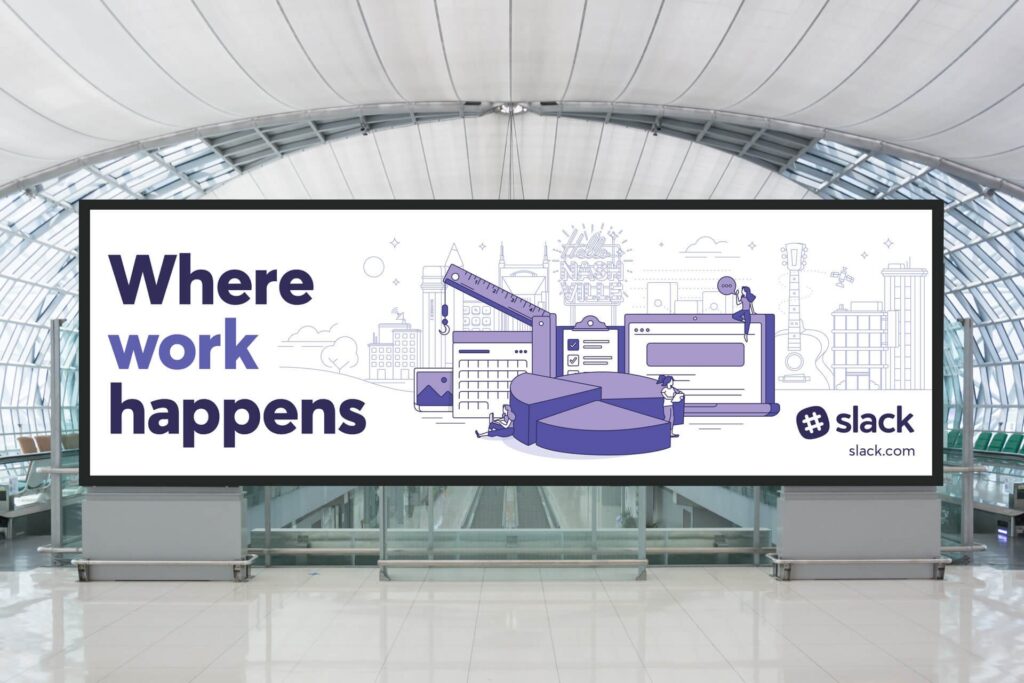
Here’s another example, a tagline we devised for Tourism Kingston as part of a bigger rebrand. On the surface, Fresh Made Daily feels redundant. A layer deeper, it’s an accurate reflection of what to expect from Kingston, Ontario. From its world-renowned research institutions to its music, food, and maker culture, there’s something new coming from Kingston every day. A newness that’s always changing.
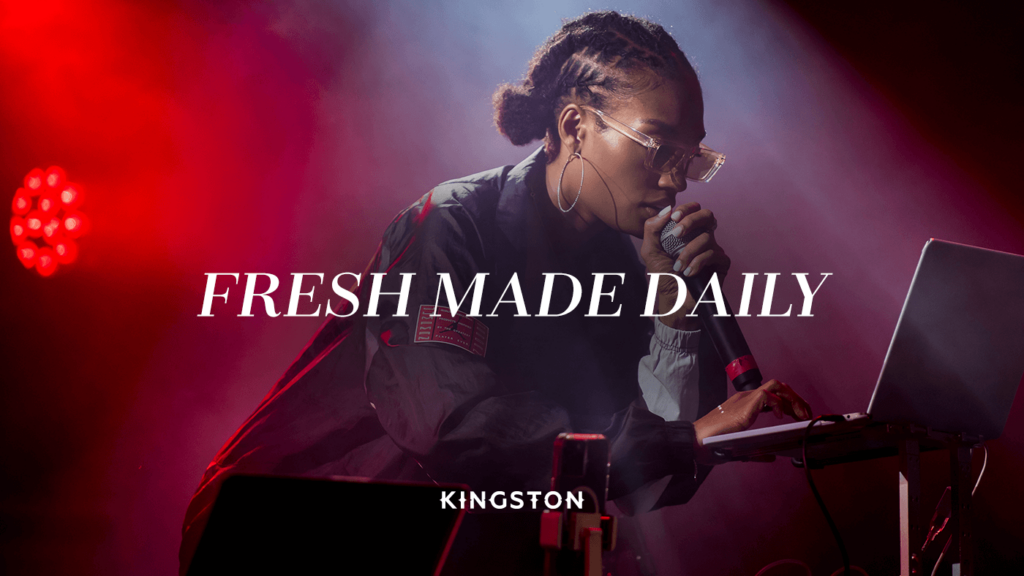
Undeniably you
Almost every article on the topic says taglines should be distinct. We say on brand.
Your brand’s verbal identity is just as important as its visual identity. Therefore, any personality traits in your messaging should surface in your taglines.
Canned water company Liquid Death is a great example. Its tagline could’ve been Quench your thirst, but as a brand that’s intentionally humorous about its heavy-metal swagger, it opted for Murder your thirst. It’s a simple tagline made memorable by an appropriate edge to the language. Sometimes that’s all it takes.
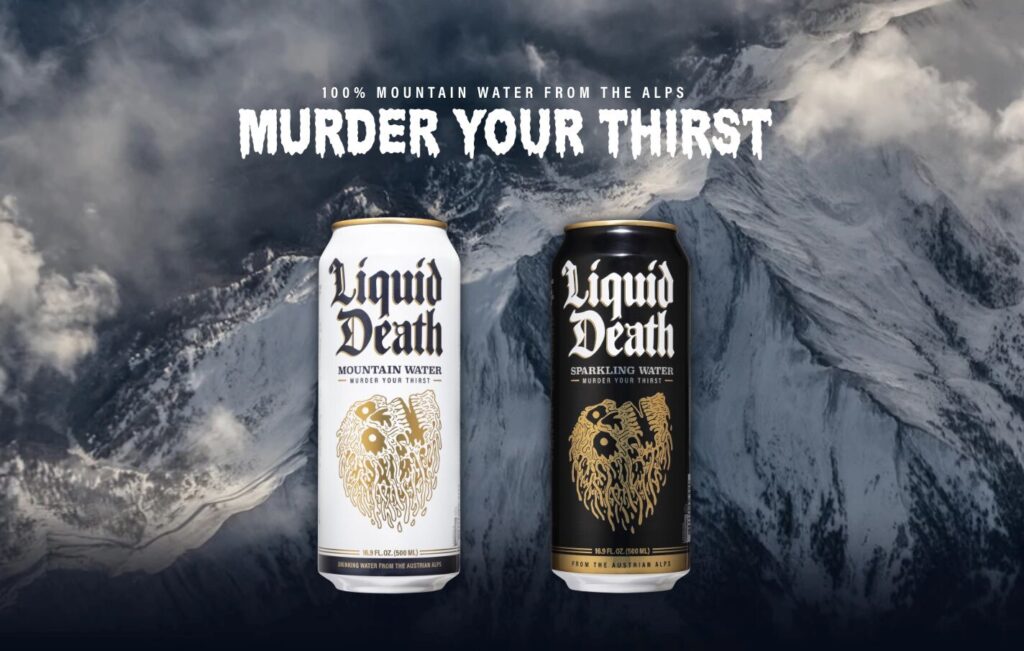
A bridge between your brand and audience
Mike Reed, Co-founder and Executive Creative Director at Reed Words, a global verbal branding agency, might’ve said it best:
“Good [tag]lines are built from truths in both the brand and the audience: what you’re offering, and what people are looking for.”
This was the case when we partnered with Canadian Parents for French (CPF) to launch a national recruitment campaign. The goal was to encourage Canadians to consider a meaningful career teaching French, as there aren’t enough French-second-language teachers to meet the demand.
Here’s how it maps to Mike’s advice:
Brand truth: prioritizing the French language
Audience truth: people don’t want a job; they want a sense of purpose
The line was right in front of us.
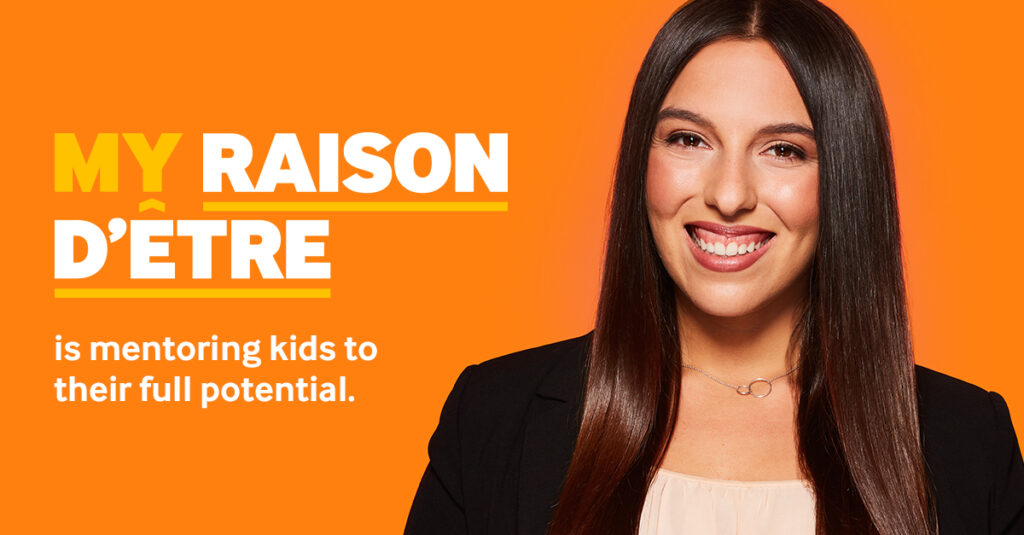
No clichés
Clichés do to brand language what crocs did to fashion: consume originality. (Sorry not sorry.) While there’s a case for being conversational, there’s a difference between familiarity and sameness. Just look at this list of taglines and headlines curated by copywriting authority Vikki Ross.
Say hello to being forgotten.
Make it stop pic.twitter.com/azVvrTOncD
— Vikki Ross (@VikkiRossWrites) February 22, 2023
No commands
Just Do It worked for Nike, but no one’s Nike but Nike, and no one’s keen on being told what to do, as harmless as it may seem. So, Don’t Do It™, unless you’re sure the context you’re operating within merits the risk.
Full transparency: we considered the tagline Live Better for a brand campaign for our client Minto Communities Ottawa. Fortunately, we realized it could feel patronizing, as if prospective homeowners aren’t currently happy with their quality of life. We then pivoted to Built for Better, a more fitting and on-brand choice.
Emotionally positioned
There’s no formula for writing a winning tagline (like a lot of creative endeavors, it’s educated guesswork), but there’s plenty of brain science to help.
Taglines that appeal to our emotions or basic human desires, like the need for attention or belonging, can help positively predispose us toward a brand.
Taglines can also employ tactics like cognitive dissonance to evoke feelings of discomfort. Take Hallmark’s old tagline of When you care enough to send the very best. What it’s really saying is, “You’re going to feel guilty if you choose a less expensive product.”
Some angles are more aggressive than others, so pick your words wisely and ensure they align with your values. Here are some other examples of emotional positioning.
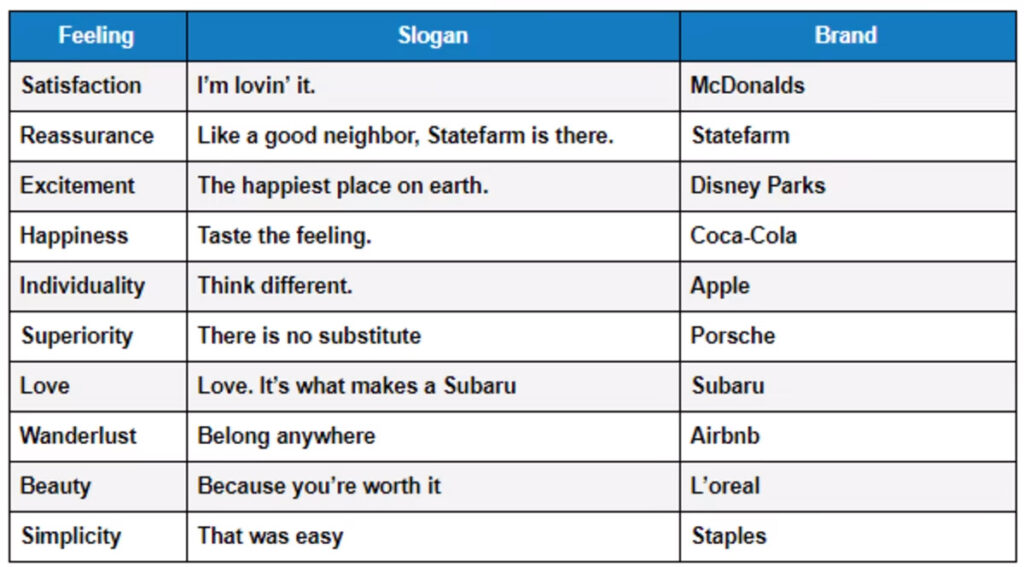
From brand to campaign.
At the brand level, taglines hold the potential to strengthen awareness and recall. They can be powerful brand builders, reinforcing your identity and swaying audience perceptions.
Taglines also come in handy when connected to an offering or campaign. They can answer or resolve creative executions. The poster series below, part of a recruitment campaign we developed with the Tourism Industry Association of Ontario, is a great example.
Here, the tagline Work doesn’t suck gives context to the headlines. Together, the two tell a captivating story: this unexpected circumstance could be your job.
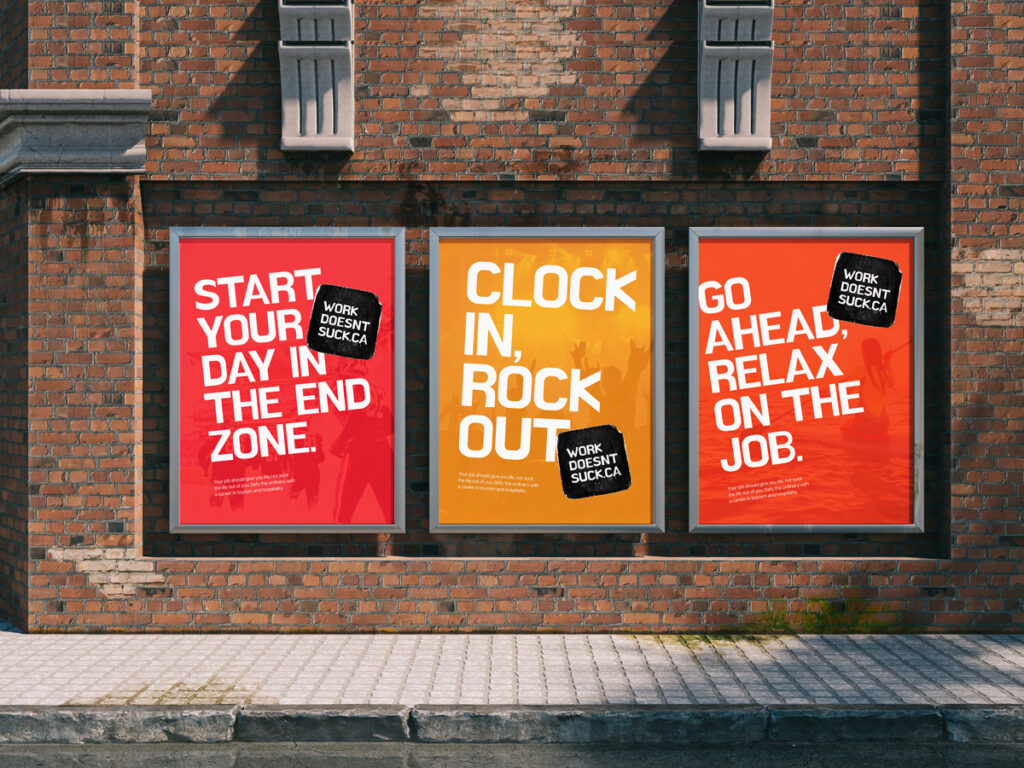
The same goes for Tinder’s first global campaign, which celebrates the vibrancy of the app’s relationship possibilities. Yes, you can argue the tagline It starts with a swipe isn’t necessary (doesn’t the logo say enough?), but there’s a certain satisfaction and memorability in how it answers the headlines. It secures Tinder as the genesis of the outcome.
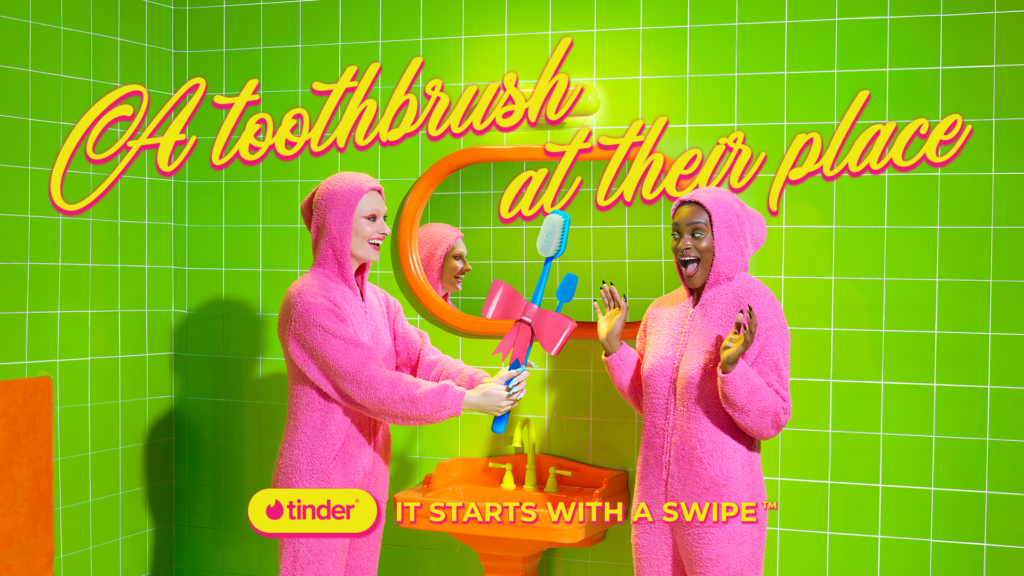
The bottom line.
Whether it’s at the brand or campaign level, taglines should be simple, meaningful, and easy to remember. Some work and some don’t (we’re looking at you, Regina Tourism), but that’s up to your market to decide.
So, take your time and give it time – time to craft and time to root. Adoption won’t happen overnight, especially if you’re repositioning. Remember that a tagline is an investment, so Make Those Words Count™.
Need help communicating?
Tagline, messaging framework, multi-channel campaign – if you need words, we can help articulate your story and turn it into a powerful business driver.
Contact our brand experts to get started.

